What Kind Of Doctor Repairs Meniscus In Knee
Meniscus Tear & Injury Repair
Meniscus Tears and Repair
The knee is ane of the most important and functional parts of the trunk. It flexes and extends to let us to carry out activities like running, squatting and climbing. There are structures inside and effectually the knee which facilitate move and protect the human knee joints.

The hamstring and quadriceps muscles, for example, help move the joint. They also help with the stabilisation of the articulatio genus. Iv ligaments help stabilize the genu every bit nosotros walk and run. They are the medial and lateral collateral ligaments and the posterior and inductive cruciate ligaments. Without these ligaments, the knee will not be unstable and normal function volition be affected.
At that place are 2 menisci in a genu. The medial and lateral meniscus are found in the within and outside compartments of the knee. They aid to support, stabilise and cushion the cartilage of the knee.
What Causes a Meniscus to Tear?
Injury to the meniscus often occurs after a sudden stop or a forceful twist. When this happens, the femur grinds into the tibia and tears the meniscus which lies between them. People who participate in strenuous concrete activities like weight lifting are prone to this injury. Also, certain sports like golf game, lawn tennis, and basketball that require pivoting can outcome in a meniscus tearing.
Symptoms of a Torn Meniscus
For some patients, a meniscal tear doesn't cause them much hurting. For others, they experience excruciating pain in their knee which may be bloated. Excessive swelling may result in stiffness of the knee joint.
Note that the swelling may not be obvious or visible. At times, a person with this injury may non exist aware of it peculiarly with modest tears.
Below are some symptoms you may feel when you have the injury:
- You hear a popping sound when climbing upwardly or down the stairs
- You feel pain afterward walking or running for a long distance
- Swollen knee joint
- The knee gives manner and makes you autumn or brand you feel unstable
- When you tin can't fully extend or flex your genu
Where Can You Go to Treat Your Torn Meniscus?
Diagnosis and handling of a torn meniscus is usually done past an orthopaedic surgeon. Of class, other caregivers and wellness professionals can diagnose the injury if they take been trained and are working in a professional medical facility, clinic or hospital.
However, when it comes to performing arthroscopic surgery, only a trained orthopaedic surgeon is able to do so. Surgery is required when the tear is significant or when the symptoms are impeding daily activities.
As nosotros age, the meniscus slowly weakens and this tin can increase the risk of developing a torn meniscus. People above 50 are prone to this injury. Simple daily activities like climbing stairs or walking can put stress on the meniscus and may consequence in a degenerative tear.
What Treatment Options are Available to Treat a Torn Meniscus?
While there are a few ways to treat a torn meniscus, the one that will somewhen exist advised by your doctor volition exist determined past the following factors:
- The severity of your injury
- Pre-existing diseases inside the knee area
Near of the time, a meniscus tear is treated with arthroscopic surgical repair or a partial meniscectomy. A surgical process is usually the all-time treatment choice for agile patients. Below are some approaches your doctor might take during the surgery :
- Arthroscopic Repair
During the surgical procedure, your doctor will brand a few incisions in your knee and insert an arthroscope to get a clear moving picture of the extent of the tear. Next, he will utilize arthroscopic stitches and fixation devices to stitch the torn expanse. Action can be resumed in 4 to half dozen weeks with the knee able to bear weight a week afterward surgery. Concrete therapy is useful to regain total part of the knee joint which will be on boilerplate 4 months afterward surgery.
- Arthroscopic Partial Meniscectomy
Your dr. will carefully remove only the damaged fragments of meniscus that interferes with articulation movement and flexibility and so that your knee can function properly.
- Arthroscopic Total Meniscectomy
This procedure is rarely performed equally meniscus tears can be ordinarily treated with i of the ii methods to a higher place. In this case, your doctor will remove the entire torn meniscus. This occurs in the unusual circumstance whereby the whole meniscus is torn and irreparable.
Recovery
After the surgery, you will accept to wear a brace for 3 weeks to help go on your knee stable. You will also have to use crutches. On the average, it will take near iv months for your injury to heal completely.
How is a meniscus tear diagnosed?
Concrete Examination and Patient History
Later discussing your symptoms and medical history, your md will examine your knee. He or she will check for tenderness along the articulation line where the meniscus sits. This often signals a tear.
Ane of the master tests for meniscal tears is the McMurray test. Your doctor will bend your human knee, then straighten and rotate it. This puts tension on a torn meniscus. If y'all accept a meniscal tear, this movement will cause a clicking sound. Your knee volition click each fourth dimension your doctor does the test.
Imaging Tests
Because other knee problems cause similar symptoms, your doctor may order imaging tests to help confirm the diagnosis.
Ten-rays. Although x-rays practice not show meniscal tears, they may evidence other causes of articulatio genus hurting, such as osteoarthritis.
Magnetic resonance imaging (MRI). This written report tin create better images of the soft tissues of your human knee joint, like a meniscus.
Treatment of meniscal tears
How your orthopaedic surgeon treats your tear volition depend on the blazon of tear you take, its size, and location.
The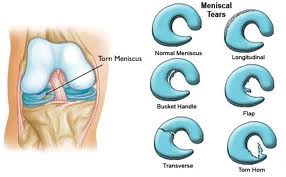 exterior one-3rd of the meniscus has a rich blood supply. A tear in this "red" zone may heal on its ain, or can often exist repaired with surgery. A longitudinal tear is an case of this kind of tear.
exterior one-3rd of the meniscus has a rich blood supply. A tear in this "red" zone may heal on its ain, or can often exist repaired with surgery. A longitudinal tear is an case of this kind of tear.
In dissimilarity, the inner two-thirds of the meniscus lacks a blood supply. Without nutrients from blood, tears in this "white" zone cannot heal. These complex tears are often in sparse, worn cartilage. Because the pieces cannot grow back together, tears in this zone are normally surgically trimmed away.
Along with the type of tear you have, your age, activity level, and any related injuries volition factor into your treatment program.
Non-surgical treatment
If the knee is stable and if the symptoms do not persist and do not limit your lifestyle, nonsurgical treatments remain an option. Yet, the determination to defer surgery depends upon whether the knee articulation remains functional and allows the patient to participate in their preferred activities (e.g. sports).
RICE. The RICE protocol is effective for about sports-related injuries. RICE stands for Rest, Ice, Pinch, and Meridian.
- Balance. Have a pause from the activity that acquired the injury. Your doctor may recommend that you use crutches to avoid putting weight on your leg.
- Ice. Employ cold packs for 20 minutes at a time, several times a 24-hour interval. Practice not utilise ice direct to the peel.
- Compression. To forestall additional swelling and claret loss, wear an elastic compression bandage.
- Pinnacle. To reduce swelling, recline when you remainder, and put your leg upwardly higher than your heart.
Non-steroidal anti-inflammatory medicines. Drugs like aspirin and ibuprofen reduce hurting and swelling.
Practise meniscal tears predispose patients to develop osteoarthritis?
Several studies have concluded that meniscal harm not treated surgically remains a meaning risk factor for the development of knee osteoarthritis.
Surgical handling
If your symptoms persist with nonsurgical handling, your doctor may suggest arthroscopic surgery.
Procedure. Knee arthroscopy is i of the almost commonly performed surgical procedures. In it, a miniature photographic camera is inserted through a small incision. This provides a articulate view of the inside of the articulatio genus. Your orthopaedic surgeon inserts miniature surgical instruments through other small incisions to trim or repair the tear.
- Meniscectomy. In this procedure, the damaged meniscal tissue is trimmed away.
- Meniscus repair. Some meniscal tears tin be repaired by suturing (stitching) the torn pieces together. Whether a tear can be successfully treated with repair depends upon the type of tear, likewise every bit the overall condition of the injured meniscus. Considering the meniscus must heal back together, recovery fourth dimension for a repair is much longer than from a meniscectomy.
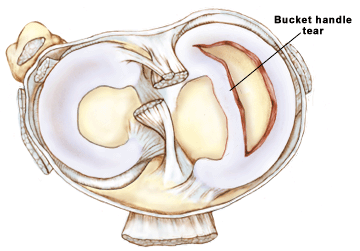
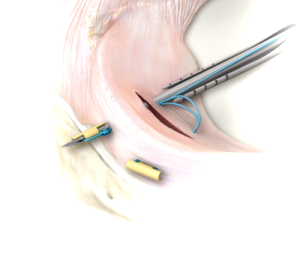
Rehabilitation
Once the initial healing is complete, your doctor will prescribe rehabilitation exercises. Regular exercise to restore your knee mobility and strength is necessary. You will showtime with exercises to improve your range of motion. Strengthening exercises will gradually be added to your rehabilitation programme.
For the near part, rehabilitation can be carried out at home, although your medico may recommend physical therapy. Rehabilitation fourth dimension for a meniscus repair is about three months. A meniscectomy requires less time for healing — approximately iii to 4 weeks.
Meniscus Repair – Animation Video
Animation video "FAST-Gear up* 360 Meniscal Repair" obtained from this link
Our Doc

Our doctor provide consultation, treatment and surgery for sports injuries of the shoulder, elbow, wrist, hip, knee and ankle.
Facilities
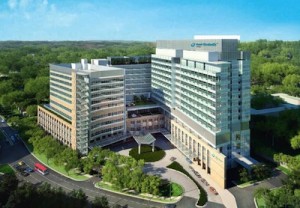
- Same-day admission
- Wheelchair accessible
- X-Ray, CT/MRI scan available
Insurance
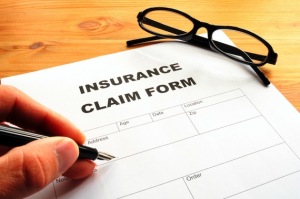
Find out more almost using your Medisave, Medical and/or Accident Insurance for your treatments. Nosotros accept international insurance.
Conditions of the Knee
- Meniscus injury/tear
- Anterior cruciate ligament (ACL) sprain/strain
- Posterior cruciate ligament (PCL) sprain/strain
- Medial collateral ligament (MCL) sprain/strain
- Lateral collateral ligament (LCL) sprain/strain
- Jumper's knee
- Housemaid's human knee
- Infra-patellar bursitis
- Patella dislocation
- Patella tendon rupture
- Quadripceps tendon rupture
- Articular cartilage injury
- Acute fat pad impingement
- Biceps femoris avulsion
- Tibiofibular articulation dislocation
- Tibial plateau fracture
- Osteochondritis dissecans
Source: https://sgbonedoctor.com/our-services/procedures/meniscus-repair/
Posted by: harperforting.blogspot.com


0 Response to "What Kind Of Doctor Repairs Meniscus In Knee"
Post a Comment